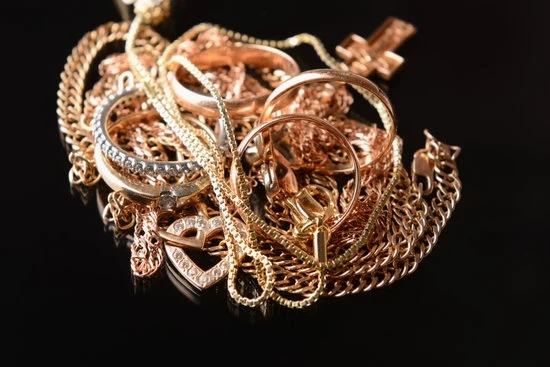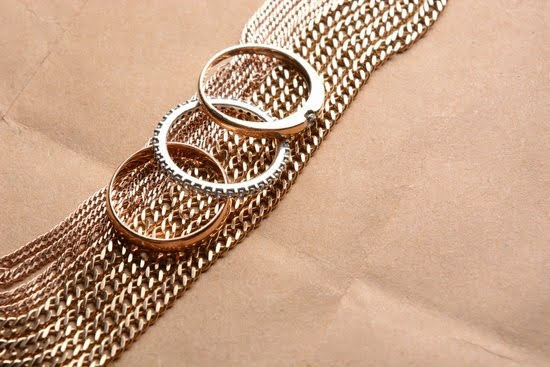When it comes to creating beaded jewelry, choosing the right string is crucial to ensure the longevity and quality of your pieces. The type of string you use can make a significant difference in how your jewelry holds up over time. From durability to flexibility, each type of string offers unique characteristics that can impact the overall look and feel of your beaded creations.
One of the key considerations when making beaded jewelry is selecting the appropriate string that aligns with your design and bead choices. Whether you are working with delicate gemstones or chunky wooden beads, you need a string that can both complement the aesthetic of your piece and withstand the weight and movement of the beads.
Understanding the different types of strings commonly used in beaded jewelry making can help you make an informed decision on what will work best for your project.
In this article, we will explore the various types of strings available for beaded jewelry making, their respective pros and cons, as well as tips for selecting the right string based on bead type and design. By understanding the importance of using the correct string for your beaded creations, you can ensure that your finished pieces are not only visually appealing but also durable and long-lasting.
Different Types of Strings Commonly Used in Beaded Jewelry Making
When it comes to creating beaded jewelry, choosing the right string is crucial for the overall quality and durability of your pieces. There are various types of strings commonly used in beaded jewelry making, each with its own unique characteristics and suitability for different projects.
One popular type of string used for beaded jewelry is nylon thread. Nylon thread is known for its strength and flexibility, making it ideal for a wide range of beads and designs. It is resistant to fraying and stretching, which ensures that your creations will last longer without losing their shape. In addition, nylon thread comes in different thicknesses, allowing you to choose the best option based on the size and weight of your beads.
Another common choice for beaded jewelry stringing is silk thread. Silk thread is valued for its softness and smooth texture, which makes it perfect for delicate or high-end pieces. It offers a beautiful drape when worn and adds an elegant touch to your designs. However, silk thread is not as durable as nylon thread and may require more frequent replacement, especially if exposed to moisture or chemicals.
A third option often used in beaded jewelry making is beading wire. Beading wire consists of multiple strands of thin steel wire coated with nylon or plastic. This type of string provides strength and flexibility, allowing you to create intricate designs with heavy beads or crystals. Beading wire comes in different grades based on thickness and flexibility, so you can select the most suitable one for your specific project needs.
Characteristics to Consider When Choosing the String for Beaded Jewelry
When it comes to creating beaded jewelry, choosing the right string is crucial to ensure the durability and longevity of your pieces. There are various types of strings available in the market, each with its own unique characteristics that make them suitable for different types of beads and designs. Before diving into your next beading project, consider these key features when selecting the appropriate string for your jewelry:
- Strength: One of the most important characteristics to consider is the strength of the string. It should be able to withstand the weight of the beads used in your design without stretching or breaking.
- Flexibility: The flexibility of the string determines how easy it is to work with while threading beads. A flexible string allows for smooth weaving and knotting, resulting in a neatly finished piece.
- Abrasion Resistance: Since beaded jewelry is often worn close to the skin, choosing a string with good abrasion resistance is essential to prevent fraying over time. This ensures that your jewelry remains intact even with frequent wear.
In addition to these characteristics, other factors such as color, texture, and ease of tying knots may also influence your choice of string for beaded jewelry. Different types of strings offer varying degrees of these features, so it’s important to assess your specific needs and preferences before making a decision. By carefully considering these factors, you can select the best string that suits both your design vision and practical requirements.
Ultimately, the type of string you choose for your beaded jewelry will impact not only its aesthetic appeal but also its overall quality and durability. Whether you opt for nylon thread for its strength or silk cord for its elegant drape, understanding the characteristics of different strings will help you make an informed choice that enhances the beauty and longevity of your creations.
So next time you embark on a new beading project, remember to take into account what kind of string to use for beaded jewelry to achieve stunning results that stand the test of time.
Pros and Cons of Using Each Type of String
Nylon Thread
Nylon thread is one of the most popular choices for beaded jewelry making due to its strength and durability. It can withstand the weight of heavy beads and multiple strands without breaking easily. Additionally, nylon thread is also resistant to fraying, which is important for ensuring the longevity of your jewelry. However, one potential drawback of using nylon thread is that it may stretch over time, especially when exposed to moisture or heat.
Elastic Cord
Elastic cord is another common option for making beaded jewelry, particularly for bracelets that need to easily stretch over the hand when worn. The main advantage of elastic cord is its flexibility and ease of use – no clasps are needed when using elastic cord for jewelry.
On the other hand, elastic cord may not be suitable for heavier beads as it has a limited weight-bearing capacity. It’s important to note that over time, elastic cord may lose its stretchiness and need to be replaced.
Silk Thread
Silk thread is known for its smooth texture and versatility in different types of beadwork. It provides an elegant look to your jewelry pieces while offering strength and flexibility. Silk thread is often used for delicate beads or pearls where a finer string is required.
However, silk thread can be more prone to fraying compared to nylon thread, so extra care must be taken during the designing and wearing process. Additionally, silk thread may not be the best choice for heavier beads as it might not provide enough support.
Tips for Selecting the Right String Based on the Type of Beads and Design of the Jewelry
When it comes to creating beaded jewelry, choosing the right string is essential to ensure the longevity and durability of your pieces. The type of string you use can impact not only how your jewelry looks but also how secure it is when worn. There are several different types of strings commonly used in beaded jewelry making, each with its own characteristics and suitability for particular designs.
One of the most popular choices for stringing beads in jewelry making is nylon thread or cord. Nylon is known for its strength and durability, making it an excellent option for heavier beads or intricate designs. It also comes in a variety of colors and sizes, allowing you to choose the perfect match for your beads.
Another common option is beading wire, which is made up of tiny stainless steel strands coated in nylon. Beading wire is ideal for designs that require flexibility and drape, such as bracelets and necklaces.
When selecting the right string for your beaded jewelry, there are several characteristics to consider. These include the weight and size of your beads, the overall design of your piece, and whether you want the string to be visible or hidden.
For example, if you are working with heavy gemstone beads, a thick and sturdy string like leather cord may be more suitable than delicate silk thread. Similarly, if you are creating a multi-strand necklace, you may opt for invisible fishing line to give the illusion of floating beads.
Step-by-Step Guide on How to String Beads Using the Chosen String
When it comes to creating beautiful beaded jewelry, one of the most crucial factors to consider is the type of string you use. The right string can not only enhance the overall look and feel of your jewelry but also ensure its durability and longevity. In this section, we will provide a step-by-step guide on how to string beads using the chosen string, taking into consideration the type of beads and design you are working with.
To start off, let’s take a look at some common types of strings that are popular among beaded jewelry makers:
- Beading Wire: Flexible and durable, ideal for heavy beads and designs that require strength.
- Nylon Thread: Soft, lightweight, and available in various colors; great for delicate beadwork.
- Silk Cord: Elegant and smooth, perfect for knotting between pearls or other gemstone beads.
Once you have chosen the right string for your project based on the characteristics mentioned earlier, follow these steps to efficiently string your beads:
- Cut a length of your chosen string, ensuring it is long enough to accommodate your design.
- If using beading wire, attach a clasp or closure mechanism before threading your beads.
- Thread your beads onto the string in the desired pattern or sequence.
- If using nylon thread or silk cord, secure the ends with a knot after threading all the beads.
Following these steps will help you create stunning beaded jewelry pieces with the right kind of string that suits both your design aesthetic and practical needs. Remember to consider the weight of your beads, the movement of your design, and any special techniques like knotting when selecting and using your string. With proper care and attention to detail during the stringing process, you can ensure that your beaded jewelry remains beautiful and intact for years to come.
Maintenance and Care Tips for Beaded Jewelry to Ensure Durability of the String
Proper Storage
One of the most important maintenance tips for beaded jewelry is to store it properly when not in use. Store your beaded jewelry in a cool, dry place away from direct sunlight or heat sources. Avoid storing them in plastic bags or containers as they can cause moisture buildup. Instead, opt for a jewelry box with compartments or a soft pouch to prevent tangling and damage to the string.
Regular Cleaning
To maintain the durability of the string used in your beaded jewelry, it is essential to clean them regularly. Use a soft, damp cloth to gently wipe down the beads and string to remove any dirt, oils, or sweat that may have accumulated on them. Avoid using harsh chemicals or cleaning solutions as they can weaken the string and cause discoloration of the beads. Allow your beaded jewelry to air dry completely before storing them.
Avoid Excessive Pulling
When wearing or removing your beaded jewelry, avoid pulling too hard on the string as it can cause stretching or breakage. Be gentle when handling your jewelry and take care not to snag it on clothing or objects that could put strain on the string.
If you notice any signs of wear or loose knots, repair them immediately to prevent further damage. By being mindful of how you handle your beaded jewelry, you can ensure the longevity of the string used in its construction.
Conclusion
In conclusion, selecting the right string for beaded jewelry is a crucial step in ensuring the durability and longevity of your creations. Considering factors such as the type of beads used, the design of the jewelry, and personal preferences can help you make an informed decision on what kind of string to use.
Whether you opt for traditional options like nylon or silk thread, or modern alternatives like stainless steel wire or elastic cord, each type has its own set of pros and cons that should be weighed carefully.
It is important to keep in mind that using the appropriate string not only contributes to the overall look and feel of your beaded jewelry but also impacts its strength and reliability. Choosing a string that complements your design aesthetic while meeting practical requirements will result in well-crafted pieces that stand the test of time. Additionally, following proper maintenance and care routines can further extend the life of your beaded jewelry by protecting the integrity of the chosen string.
In essence, understanding what kind of string to use for beaded jewelry goes beyond mere aesthetics – it is about creating pieces that are not only visually appealing but also well-made and durable. By considering all aspects of string selection, from material characteristics to design compatibility, you can elevate your beadwork to new heights and enjoy wearing your creations for years to come.
Frequently Asked Questions
What Is the Best Thread for Beading Jewelry?
The best thread for beading jewelry depends on the type of beads you are using and the design of the jewelry. Some popular options include nylon thread, silk thread, and coated beading wire.
Nylon thread is flexible and durable, while silk thread is great for intricate designs. Coated beading wires are ideal for heavier beads or when extra strength is needed.
What String Do You Use to Make Beaded Bracelets?
When making beaded bracelets, it is important to use a string that is strong enough to hold the weight of the beads but also flexible to create comfortable wear. Stretch cord is a popular choice for beaded bracelets as it allows for easy wearing without the need for clasps.
Beading wire is another option, especially for heavy or sharp-edged beads that may cut through other types of string.
What Is the Best String for Beaded Jewelry?
The best string for beaded jewelry ultimately depends on the specific design and types of beads being used. However, some commonly recommended strings include nylon thread, silk cord, elastic cord, and coated beading wire.
Nylon thread is great for flexibility and durability, silk cord adds a touch of elegance to delicate designs, elastic cord allows for easy wear and removal without clasps, and coated beading wire provides extra strength for heavier beads or intricate designs.

Welcome to my jewelry blog! My name is Sarah and I am the owner of this blog.
I love making jewelry and sharing my creations with others.
So whether you’re someone who loves wearing jewelry yourself or simply enjoys learning about it, be sure to check out my blog for insightful posts on everything related to this exciting topic!





